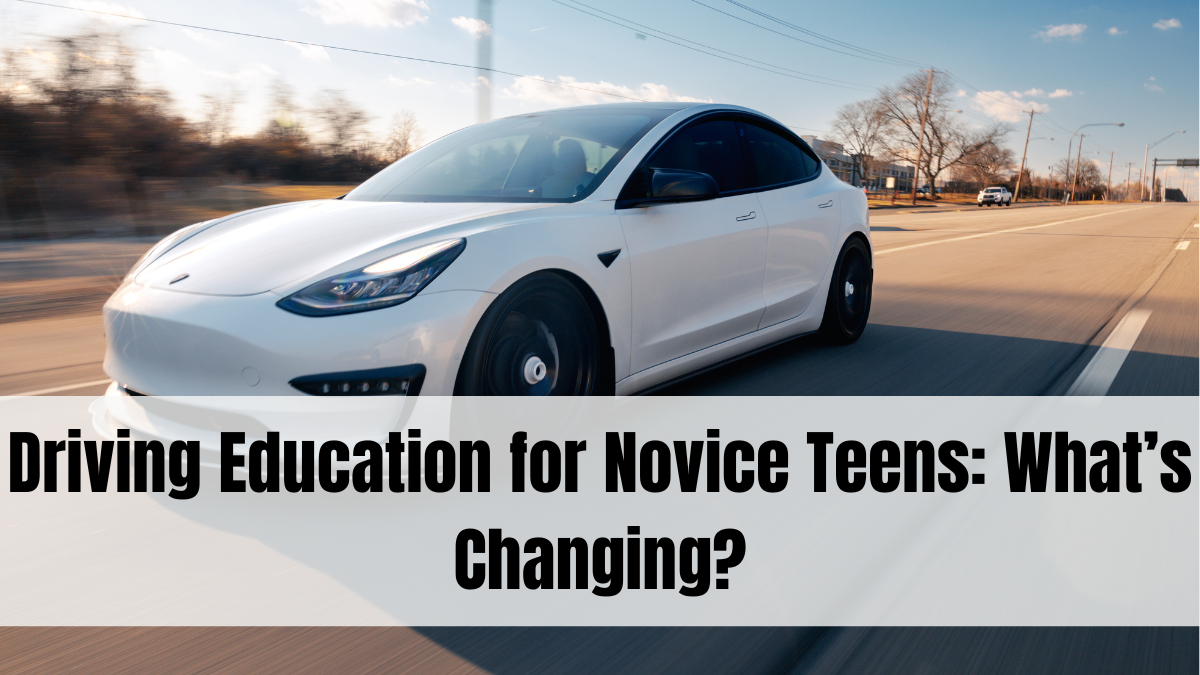Learning to drive is one of the biggest milestones in a teenager’s life. But the methods used to teach new drivers are undergoing a major transformation. With increasing road complexity and distracted driving risks, a traditional classroom approach no longer suffices. This novice driver education review explores how simulation tools, tech-enhanced instruction, and new teaching models are reshaping how teens learn to drive in 2025.
From high school CTE (Career and Technical Education) programs to private driving schools, education providers are now turning to digital learning, real-time hazard perception training, and parent-involved modules to build more confident and safety-conscious drivers.

Embracing Driving Simulators and Virtual Training
One of the most notable changes in novice driver education is the integration of realistic simulators. These setups give teens a safe, risk-free environment to learn critical driving skills before ever touching a real car.
Benefits of using simulators include:
-
Practice in different weather and lighting conditions
-
Real-time feedback on lane discipline and braking
-
Hazard recognition training without real-world risks
-
Reduced anxiety before entering traffic situations
Modern simulators also track student errors and suggest improvement paths, making driving education more adaptive and personalized.
Enhancing Hazard Perception and Decision-Making
Today’s roads are unpredictable. That’s why modern driver education places strong emphasis on hazard anticipation and decision-making.
Current programs use:
-
Video analysis of real accident scenarios
-
Split-second decision quizzes under timed pressure
-
AI-based assessments to evaluate reaction speed and safety judgment
-
Visual and auditory distraction training (such as simulating phone use)
This level of training ensures teens are not just rule-followers — they’re critical thinkers behind the wheel.
Integrating Tech-Savvy Learning Tools
To appeal to today’s digital-native teens, educators are leveraging technology that blends education with gamification.
New learning tools include:
-
Mobile apps with driving flashcards and mini quizzes
-
Augmented reality (AR) overlays to teach road sign meanings
-
Dashcam feedback for self-evaluation
-
Online logbooks synced with instructor assessments
These innovations are helping increase retention, engagement, and measurable progress for students.
A Bigger Role for Parents and Guardians
Another key finding in the novice driver education review is the increased involvement of parents in their teen’s learning process.
Modern driver education includes:
-
Parent-student driving contracts and practice schedules
-
Training modules on how to provide safe feedback during practice drives
-
Mobile apps that track parent-supervised driving time
-
Long-term outcome tracking to measure improvement post-license
These efforts ensure that learning doesn’t stop after the last formal lesson. Parental engagement has proven effective in improving teen driving behavior and reducing crash rates.
Policy Updates and GDL Reinforcement
Governments and education boards are also tightening regulations to improve teen driving outcomes. Many states and countries now enforce stricter Graduated Driver Licensing (GDL) systems, which limit night driving, passenger count, and device use.
Schools and private educators have aligned their curriculum with:
-
GDL phase-by-phase readiness checklists
-
Mandatory seatbelt and DUI awareness modules
-
Emphasis on defensive driving techniques
This regulatory alignment ensures safer roads and better-prepared new drivers.
FAQs
What is the focus of modern novice driver education?
Modern education focuses on simulators, hazard perception, real-time decision-making, and interactive tools to improve teen driving skills and safety.
Are simulators replacing on-road training?
No, simulators are used to supplement on-road training. They help students build confidence and learn foundational skills in a controlled environment.
How are parents involved in teen driver education?
Parents help by supervising practice drives, tracking progress with apps, and receiving training on how to give effective and safe driving feedback.
What role does technology play in driver’s ed today?
Technology is used for online learning modules, AR teaching tools, mobile apps for logging hours, and AI-driven feedback systems.
Do these programs improve teen driver safety?
Yes, studies show that integrated programs with simulators, tech tools, and parental involvement significantly reduce crash rates among new drivers.
Click here to know more.
